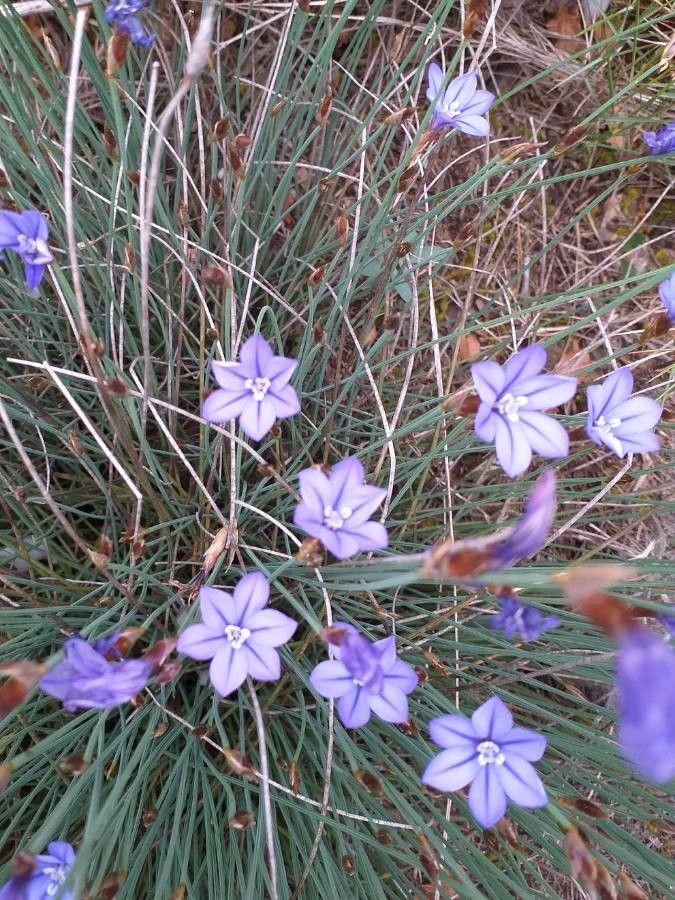Propagating Aphyllanthes monspeliensis: A Challenge Worth Embracing
Aphyllanthes monspeliensis, commonly known as the Montpellier sea-lavender, is a striking evergreen perennial belonging to the Asparagaceae family. Its unique, grass-like foliage and elegant, slender spikes of blue flowers make it a coveted addition to rock gardens, gravel gardens, and Mediterranean-style landscapes. Its drought tolerance and adaptability to poor soils further enhance its horticultural significance. While its beauty is undeniable, propagating Aphyllanthes monspeliensis presents certain challenges, making success all the more rewarding for the dedicated gardener.
Seed Germination:
Currently, there are no known reliable methods for seed germination propagation of Aphyllanthes monspeliensis. While seeds may be produced, their germination rate is reportedly extremely low, and successful germination under cultivated conditions remains undocumented. Further research into specific germination requirements, such as light and temperature regimes, stratification techniques and the use of germination stimulants, might be needed to unlock this propagation method.
Cuttings:
Propagating Aphyllanthes monspeliensis from cuttings offers a more promising approach than seed germination.
Challenges: Root development from cuttings can be slow and inconsistent. The success rate is often dependent on timing (ideally taking cuttings in spring or early summer) and maintaining optimal humidity.
Practical Tips: Semi-hardwood cuttings, taken from non-flowering stems, are recommended. The cut ends should be dipped in a rooting hormone before planting in a well-draining, moist propagation mix. Maintaining high humidity, perhaps using a propagator or enclosing the cuttings in a plastic bag, significantly improves success rates. Consistent but not excessive moisture is crucial; overwatering can lead to rot.
Rewards: Successful rooting from cuttings provides a relatively quick way to increase the number of plants and maintain desirable traits from the parent plant.
Division:
Division is another viable method for propagating Aphyllanthes monspeliensis.
Challenges: Aphyllanthes monspeliensis tends to form relatively compact clumps, limiting the frequency of successful division. Careful handling is necessary to avoid damaging the fibrous root system, which is essential for successful establishment.
Practical Tips: Division is best carried out in spring or autumn, coinciding with periods of active growth or dormancy. Gently lift the mature clump, carefully separating it into smaller sections, ensuring each division has a good portion of roots and healthy foliage. Plant the divisions immediately into well-prepared soil.
Rewards: Division is a simple and efficient method to increase the plant population, particularly useful for maintaining genetically identical clones of desirable individuals.
Tissue Culture:
Tissue culture propagation for Aphyllanthes monspeliensis has not been widely explored or documented.
Challenges: The lack of readily available protocols and the need for specialized equipment and expertise present significant barriers to this method.
Practical Tips: This method would require intensive research to determine optimal culture media, growth regulators, and sterilization procedures.
Rewards: Tissue culture is theoretically capable of large-scale propagation, producing a high number of plants rapidly and preserving genetic uniformity.
Conclusion:
Propagating Aphyllanthes monspeliensis presents unique challenges across various methods. Seed germination remains unproven, while cuttings and division are more reliable options yet require patience and attention to detail. Tissue culture, while potentially offering the greatest output, necessitates significant research and resources. However, the rewards of successfully cultivating this beautiful plant far outweigh the difficulties. The satisfaction derived from nurturing a small cutting into a thriving clump, or from coaxing a division to re-establish itself, is a testament to the gardener’s dedication and skill. So, embrace the challenge, experiment with the different approaches, and experience the immense satisfaction of achieving success with this remarkable plant.
